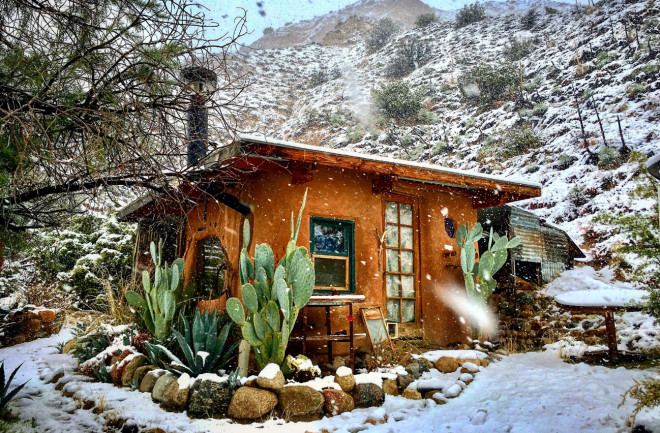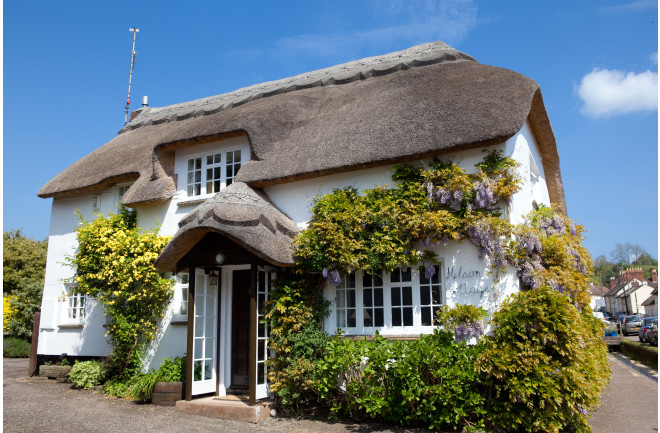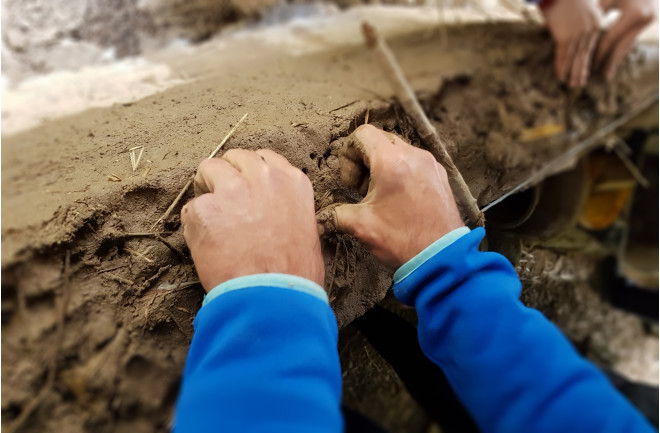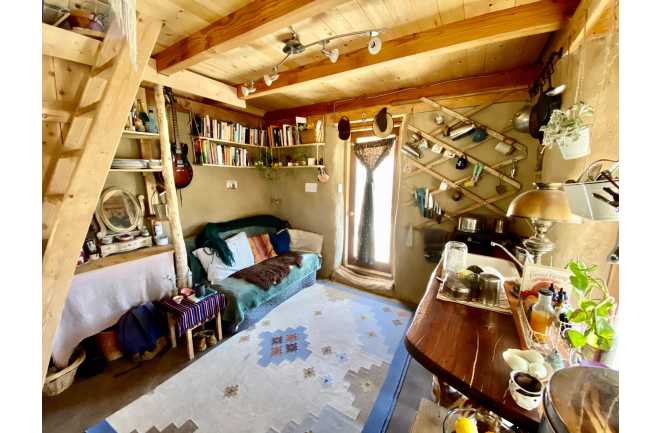Three small cob homes (about 100 square feet each) cost around $500 each, not including labor. Quail Springs Permaculture, an educational non-profit in Southern California, built the houses over the span of a few months.

According to their natural building director, Sasha Rabin, the structures were made using — along with reclaimed fixtures such as doors and window frames — materials sourced near the construction area.
“We are interested in building systems where people can build shelter for themselves and their families, much like people used to not that many generations ago,” Rabin says.

Cob structures can be found around the globe. Some wizened cob buildings, dating back centuries, can be found in the United Kingdom’s Devon County. There’s a growing interest in the material for its environmental benefits and ease of use.
The structural strength of cob comes from fibrous plant material, which lends tensile strength, sand provides compressive strength and clay-rich soil binds it all together.
Researchers have found that during the construction phase, cob requires 75 percent less energy than more conventional wall systems. When it came to maintenance, heating and cooling, cob does require more energy than traditional building materials in some cases. However, after factoring in the benefits from the construction phase, the earthen material still outperforms its competition over an entire 50-year time span.

According to Rabin, cob performs best in regions that are hot and dry — and it isn’t useful around the world. Earthen building material is a poor insulator but has a strong ability to store heat. That makes it a poor choice for, say, Alaska, but a great one for California, where the material can soak up heat during the day and release it during the region’s cold nights. “It equalizes these quite large temperature swings,” Rabin says.
Another factor, Rabin says, is that building a cob house can be tricky on an administrative level. Although not illegal anywhere, a person looking to use cob in the U.S. must get a permit, which can be difficult given the general lack of knowledge surrounding the material.

To combat these administrative roadblocks, Rabin traveled to a Texas laboratory in May to perform a fire test on a cob wall (the wall is still drying, so the test has yet to be performed). Similarly, Quail Springs collaborated with engineering students from California Polytechnic State University, San Luis Obispo to perform earthquake testing on cob walls.
And last year, a cob code was approved for inclusion in the International Residential Code. While the IRC is a model building code with no legal standing of its own, it is used in most of the U.S. as the basis for building codes. Submitted by the Cob Research Institute, the adoption should make building cob structures easier in the future.
“Part of our interest is figuring out how to make houses more accessible,” Rabin says, “and figuring out how to remove the roadblocks keeping people from having safe, affordable homes.”
You can read the original article at www.discovermagazine.com
